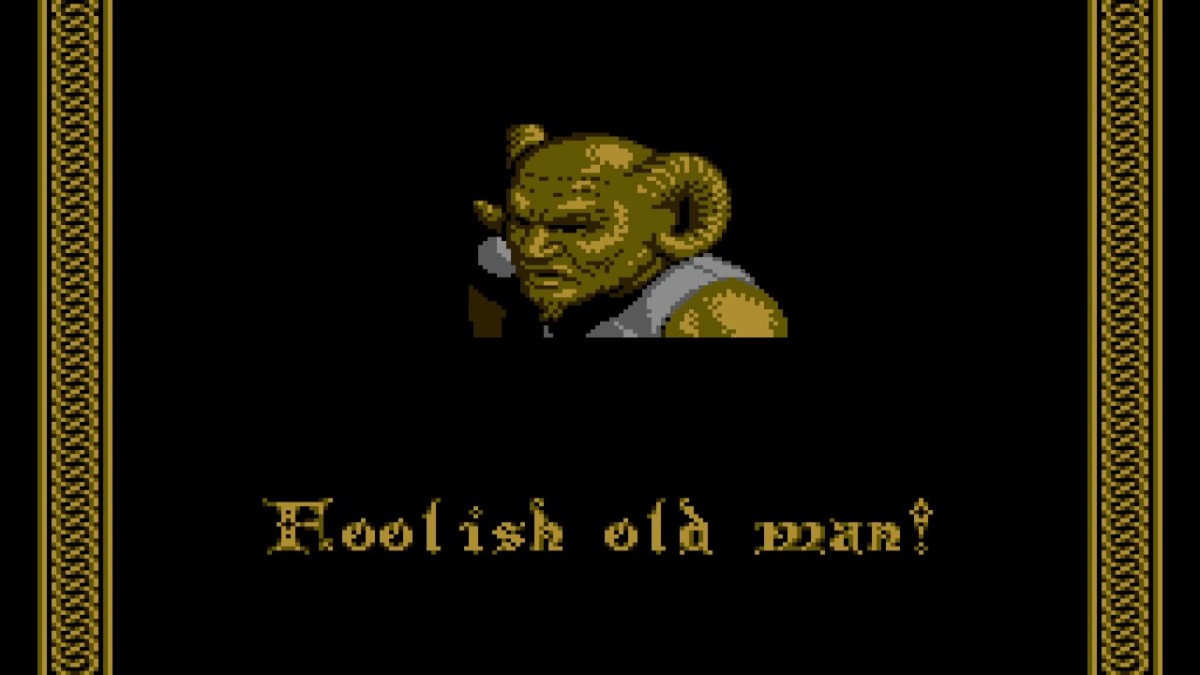On July 15, Nintendo will add The Immortal to Nintendo Switch Online’s ever-growing collection of retro games. As a free game (outside of the subscription price of Nintendo Switch Online, of course) that initially appeals with its “side of the van” cover art and promises of dungeon crawler gameplay, I imagine that you may be tempted to try it.
That’s why I feel obligated to warn you now that The Immortal is not the innocent NES game that it appears to be. In fact, it’s a game so frustrating, confusing, and downright cruel that it has haunted the dreams of any gamer who was unfortunate enough to give it a shot in 1990. Back then, they didn’t know that they were about to experience what may very well be the meanest thing publisher Electronic Arts ever unleashed upon the world in the decades before microtransactions.
These days, infamously difficult games like The Immortal are typically referred to as the “Dark Souls” of whatever genre. Not only is that comparison overplayed, but it’s not even accurate in most cases. But The Immortal, which was designed by lone developer Will Harvey, is the one game that deserves that sometimes unfair reputation for extreme difficulty that has come to define the Dark Souls franchise.
After all, Dark Souls is tough, but the franchise is really all about learning the language of the game world. See a bloodstain on the floor of an elevator? It’s best to get off of it before you reach the top floor. Does a particular area in the game feel impossibly difficult? That’s because you need to go somewhere else to level up first.
There are certainly moments when Dark Souls is cruel, but generally speaking, you can overcome most of its challenges on the first try (at least in theory). Dark Souls uses death as a teaching tool, but the franchise usually gives you a chance to succeed in the first place.
To be fair, The Immortal does these things, too. The warning comes in the game’s very first room, where you will almost certainly step on a nearly unavoidable hidden trap. It’s then that The Immortal tells you that it might be a good idea to move. I hope you enjoyed this cute meta moment because it’s the last time the game will pretend to care about you.
From that point on, you will inevitably fall victim to The Immortal‘s array of trap floors, incoming projectiles, and baffling puzzles. That doesn’t sound all that different from infamously difficult NES classics like Ninja Gaiden and Castlevania, but in those games, death is a consequence designed to be subverted through your inputs and skill. In The Immortal, death is a vital part of the process.
Everything is trying to kill you in The Immortal and we’re not just talking about the wandering enemies who at least have the decency to make their ill intentions known. In The Immortal, looking at an item that encourages you to look at it can kill you. Dropping an item in the wrong place (even if it was the right place in another room) will kill you. What will most certainly kill you are the numerous invisible pits spread throughout the game that are designed to resemble every other floor tile.
How are you expected to overcome these obstacles? Well, you need to die. You die until you know which parts of the floor are safe, which items will kill you, and which doors are the right doors. You inch forward until you die and then you inch forward again.
With the exception of some simple combat sequences and a few traditional puzzles that you could theoretically solve without too much trial and error, The Immortal offers you few chances to avoid death. Like the maze on the back of a Denny’s kid’s menu, success in The Immortal is all about learning the right route in the midst of a dark and lonely place.
That is the heart of what makes The Immortal such a legendarily frustrating experience. You never really feel gratification for having overcome something because your success is entirely a matter of patience. At the same time, you could fairly easily make your way through the game again at a relatively fast pace once you’ve memorized all the traps and beeline your way to the final boss. You never really “beat” The Immortal so much as you let it punch itself out. At least the Sega Genesis version of the game featured brutal victory animations more violent than even early Mortal Kombat fatalities. A little catharsis there.
Yet, for as unbelievably annoying as The Immortal is, there’s that part of me that thinks you should experience it just once as it was meant to be played. By that, I mean trying to beat it without guides or modern conveniences such as save states. Not only does The Immortal perfectly recreate the experience of trying to work your way through a dark dungeon designed to deal death at every turn, but it is perhaps the ultimate example of a time when games were far less forgiving.
If nothing else, the surprising re-release of The Immortal offers us a chance to rid ourselves of the desire to compare every challenging game to Dark Souls. Instead, we should consider reserving a new designation for those games that exist solely to punish us, not for our in-game mistakes, but for continuing to push through them even when our only reward is no longer having to play them. We should call those games “Immortals.”
